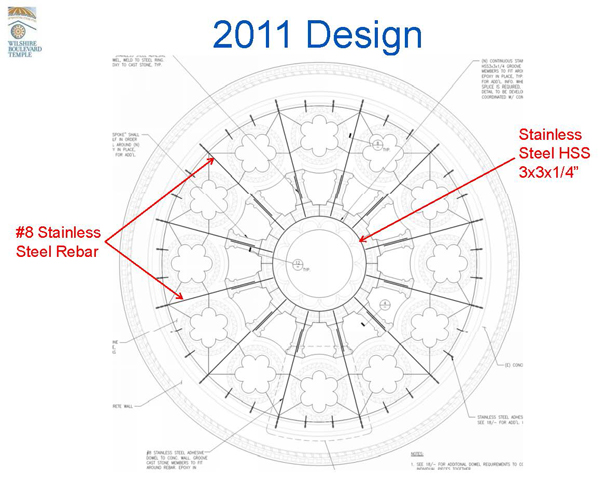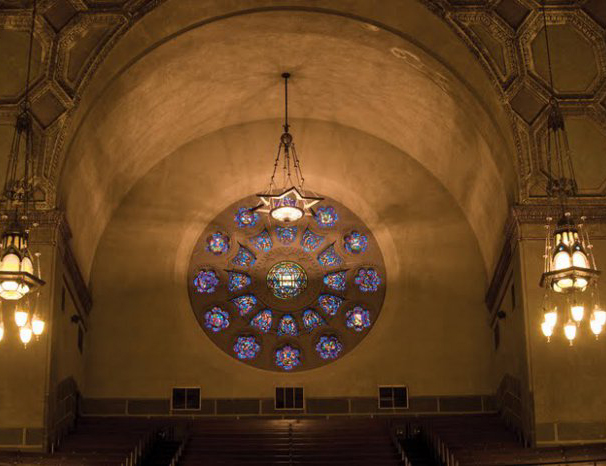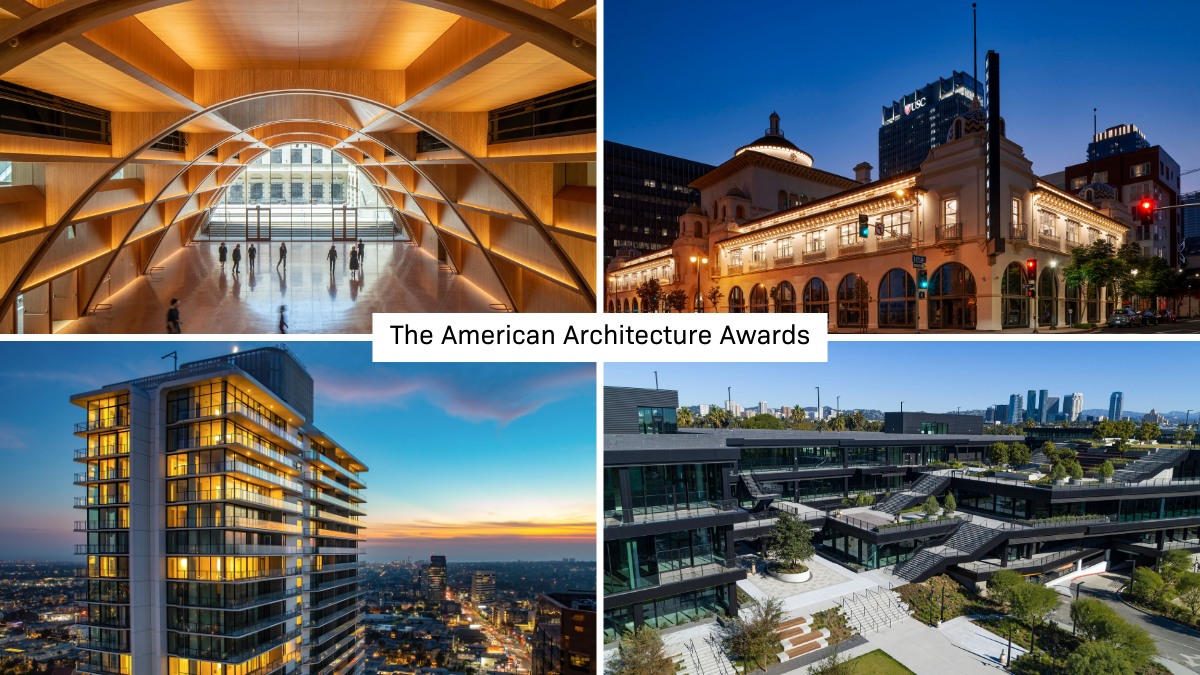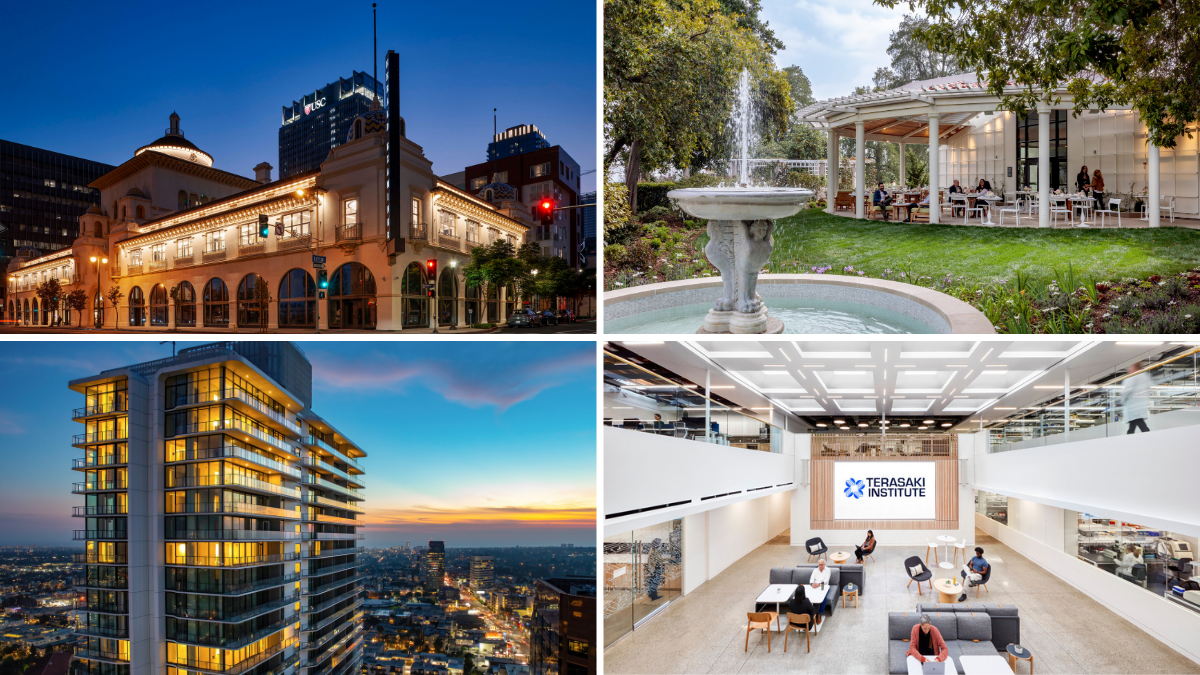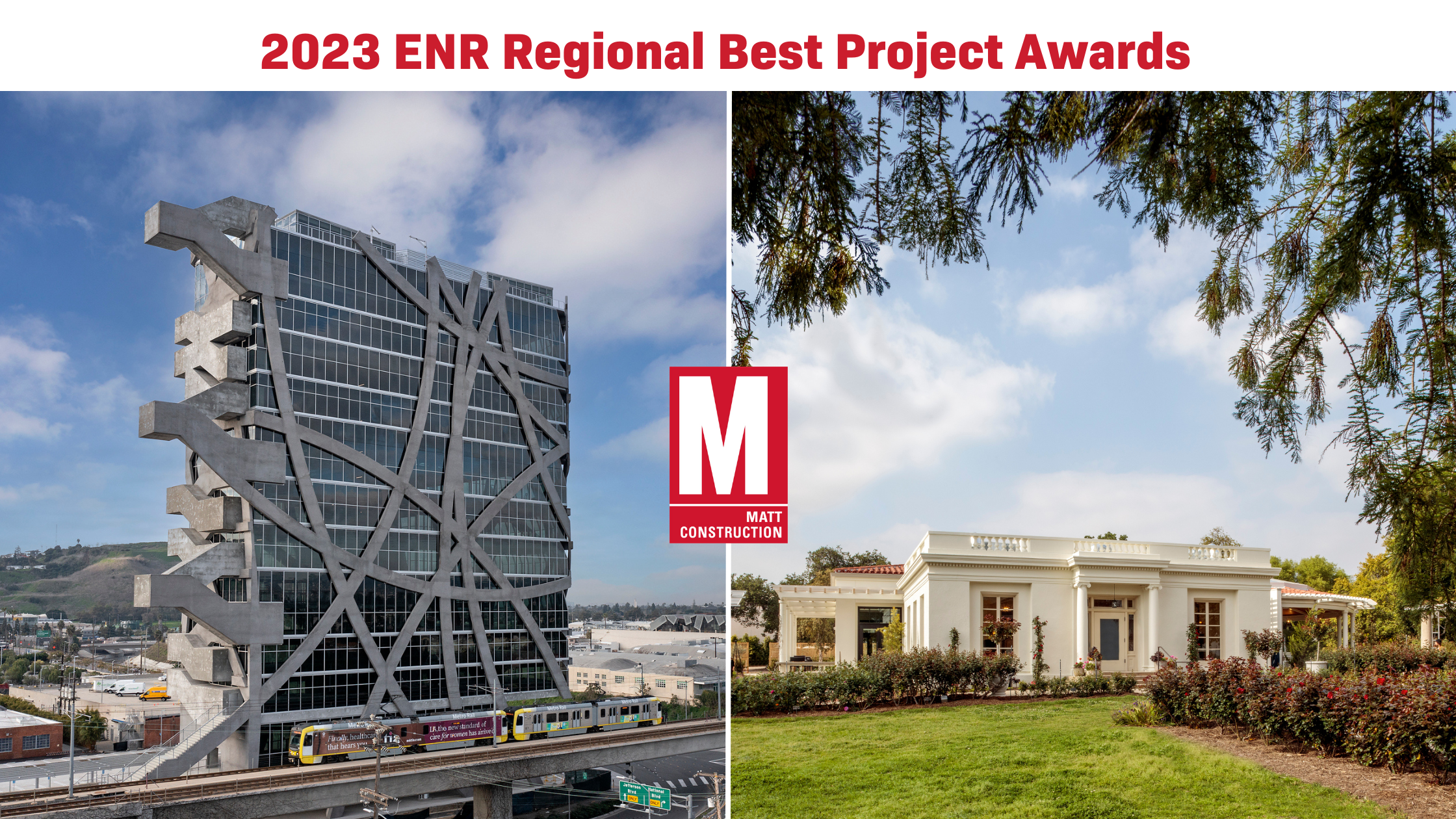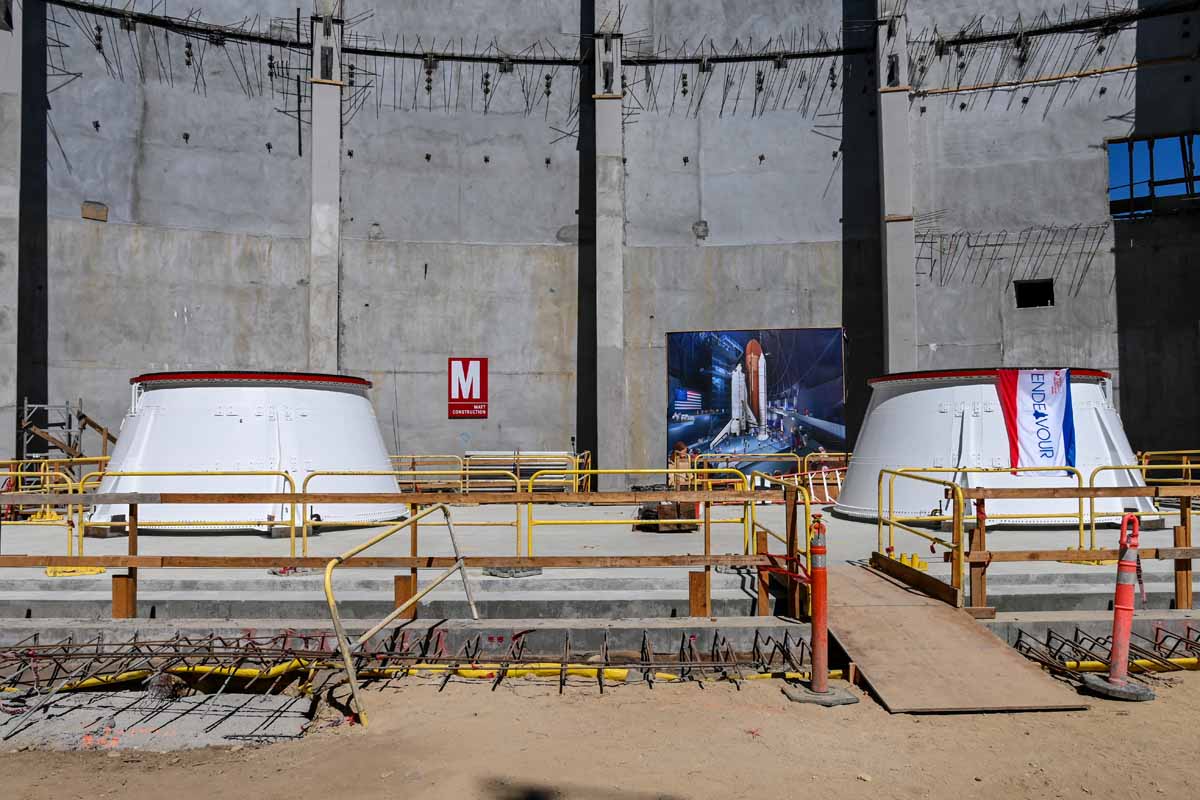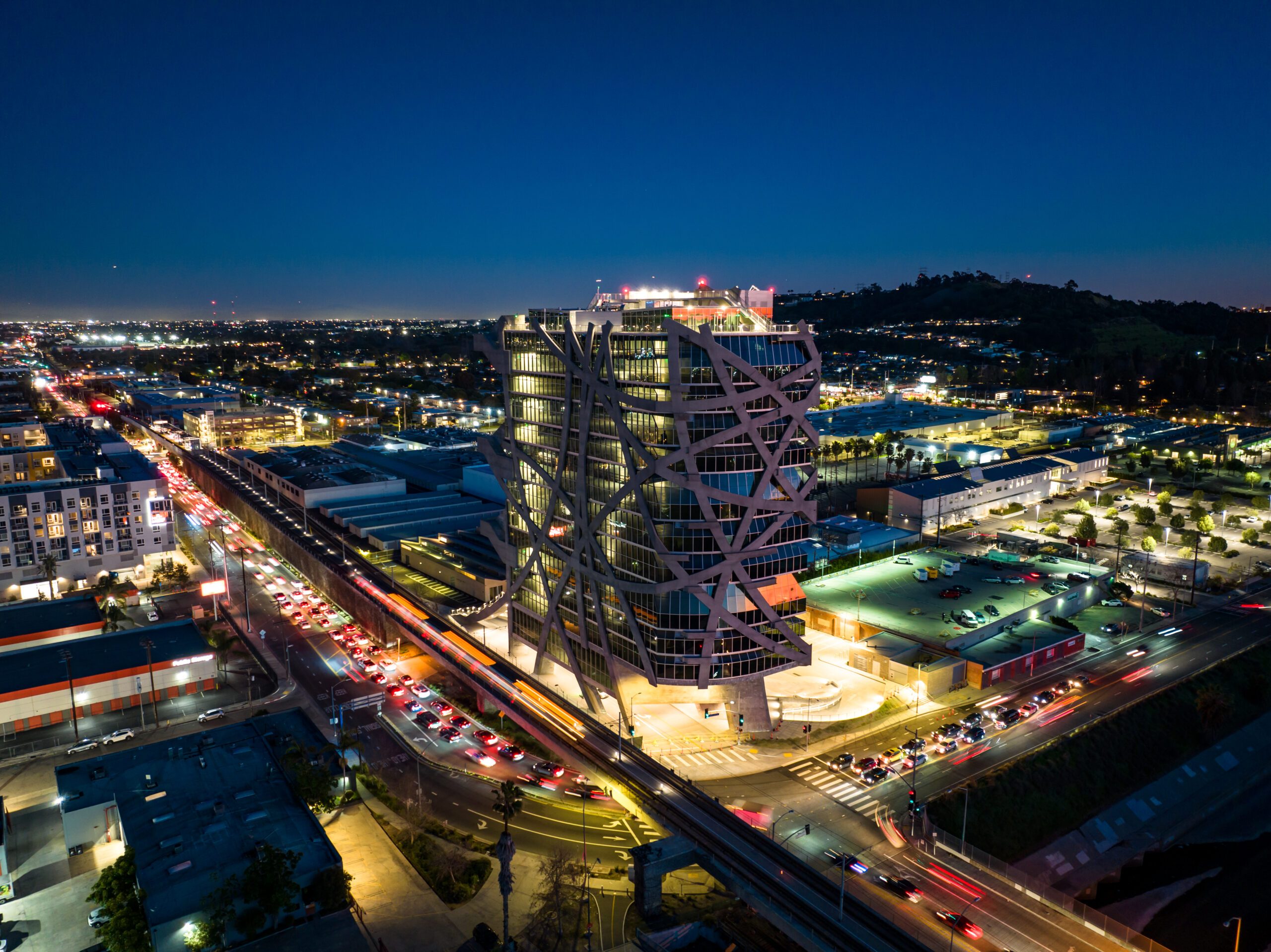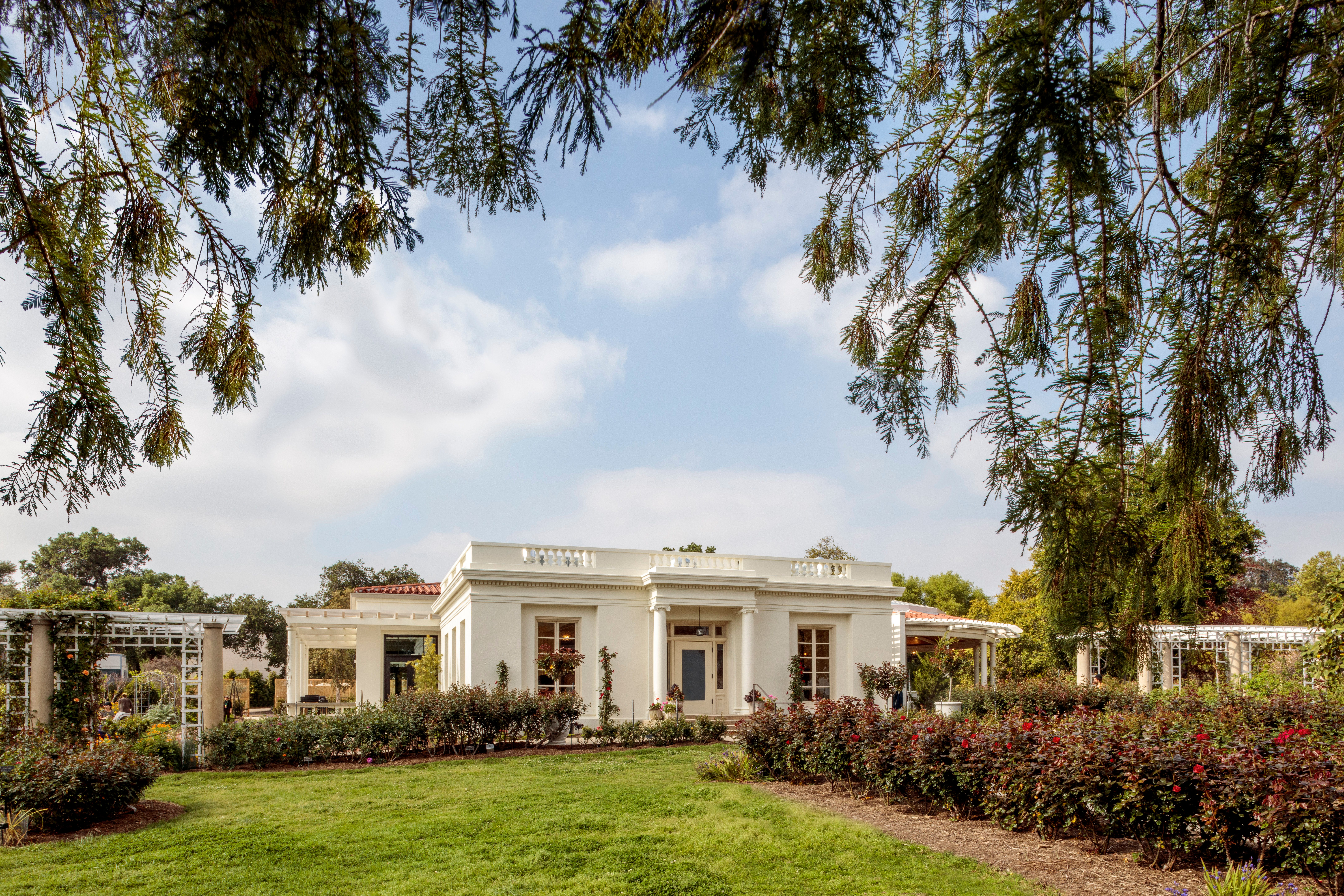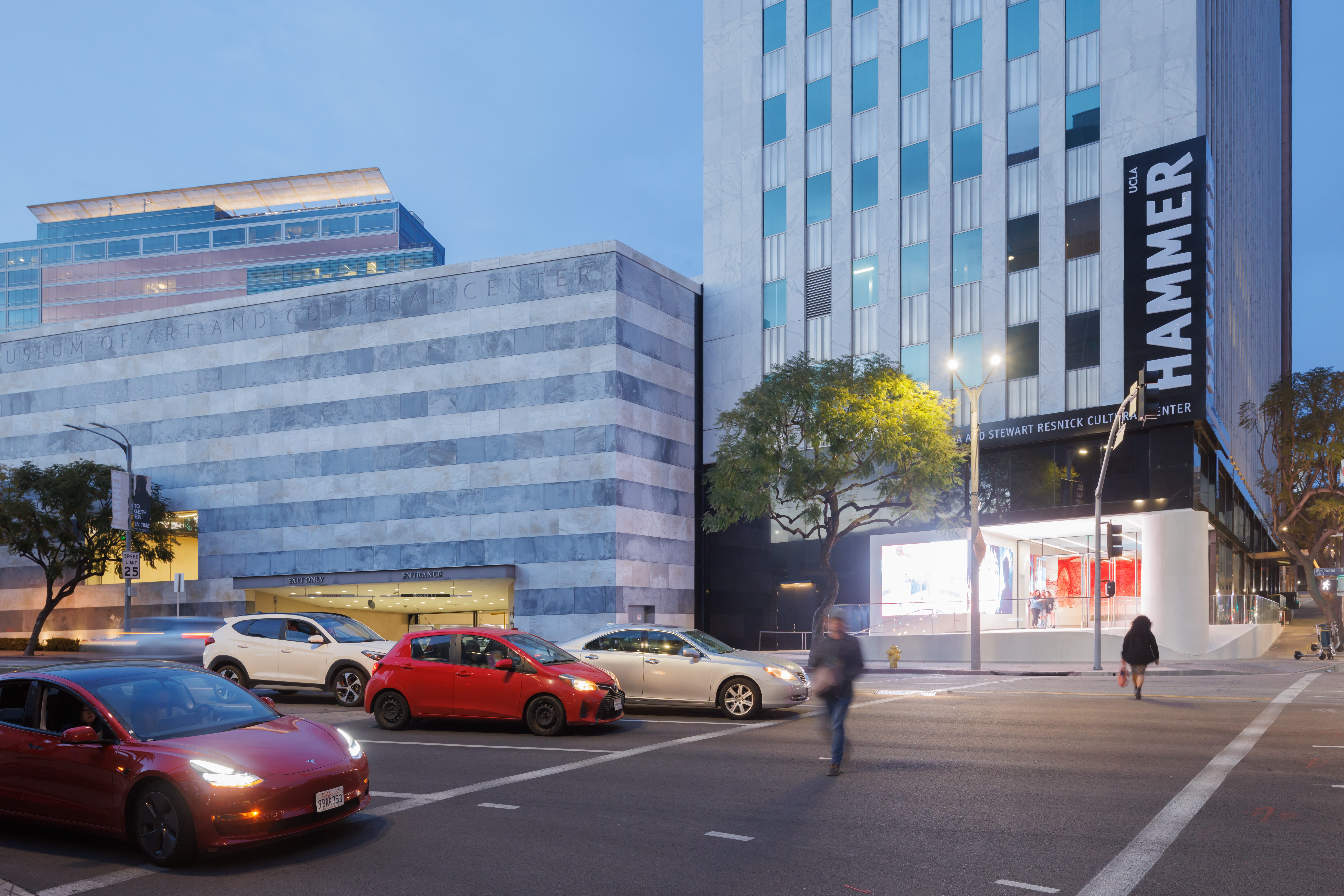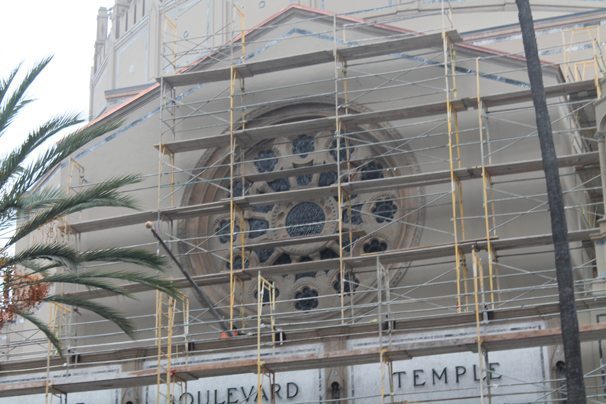
Scaffolding surrounding the Rose Window
Location
Los Angeles, CA
Owner
Wilshire Boulevard Temple
Architect
Levin & Associates Architects
Construction Manager / Owner's Rep
Searock Stafford CM
ViewWilshire Boulevard Temple Progress
MATT Construction has had the privilege of helping restore some of L.A.’s most beautiful historic structures to their original grandeur–the Natural History Museum Rotunda, the Hollywood Bowl, and multiple Frank Lloyd Wright homes, to name just a few–and we have enjoyed the opportunities to watch masters of often arcane arts repair or even recreate each building’s unique features and ornamentation.
Our current project restoring the 1929-vintage Wilshire Blvd Temple, the oldest synagogue in the Los Angeles area, is a case in point: Byzantine in architecture and embellishment, its restoration has drawn on a wide range of skills.
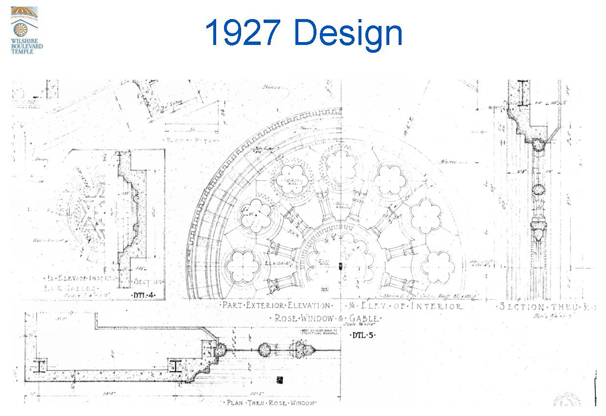
In fact, the project has involved the only known instance in the United States where both the glass and the cast stone of a rose window have been removed, structurally reinforced, and reinstalled. Considered one of the finest specimens of this art form in the U.S., the ~25 ft diameter window is kaleidoscopic in appearance, with a central roundel of stained glass–depicting the Star of David protectively encircling a Torah–encompassed by two concentric rings of 12 colorful medallions, the outermost of which depict deftly rendered symbols of the 12 tribes of Israel. Encircling the whole and dividing the total of 25 stained glass panels is a cast stone surround which, though plain in color, is rich in carved ornamentation, in impression both massive and delicate.
After 80 years above Wilshire Boulevard, it needed cleaning, stabilization and seismic strengthening. Its restoration became the first task of the overall project, beginning even before the formal ground-breaking in October 2011. It concluded in February 2013, comfortably ahead of the scheduled reopening for Rosh Hashana on September 4th.
This success was the result of a team effort by two local firms: Preservation Arts, award-winning specialists in historic masonry restoration, expert in natural and man-made porous architectural materials; and the stained glass virtuosos of Judson Studios, a 5th generation family-owned and operated business as intricately bound up with the history of L.A.’s notable architecture as the Synagogue itself.
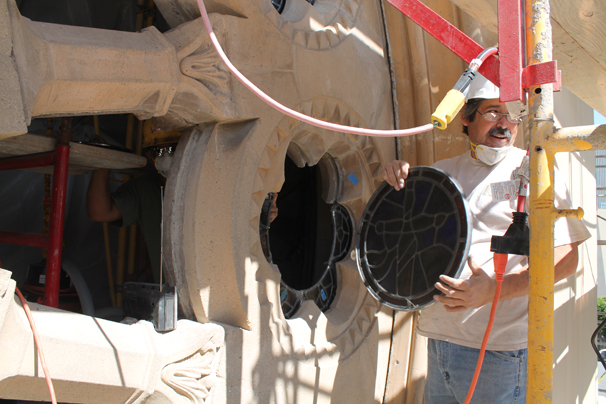
The task began with Judson craftsmen working atop a 35 ft tall scaffold, carefully removing the stained glass medallions, each measuring about 2 ft across, and the central roundel, about 4 ft in diameter, for refurbishment back at their studio.

Preservation Arts then precision-cut the surround into its original sections and, using a specially rigged crane, gently moving each piece to the ground. For the next several months, with the opening temporarily shielded by clear glass, the two firms separately restored their respective components.
Back at their studios, Judson artists began the work of cleaning and strengthening the stained glass panels. In the words of founder, Horace Judson, a stained glass window is “a window composed of a limitless number of jewel-like bits of glass, colored in the making….Light, line and color,” he concluded, are “the essential elements of a stained glass window: leaded lines define the areas of color and design; light awakens the colors, because the colors are in the glass.” Guided by this vision, the current generation of Judson artists completely took apart each of the panels, meticulously cleaned every piece of glass, and re-leaded them with new cames. Each panel was sealed to protect it against weather, stabilize it against rattling and strengthen it against tremors and quakes. When they were done, they had restored the temple glass to its vibrant color and sheen.
Working on–and in a sense in–the background, the experts at Preservation Arts addressed the complex, if less colorful, problem of re-engineering and restoring the window’s surround of embellished cast stone.
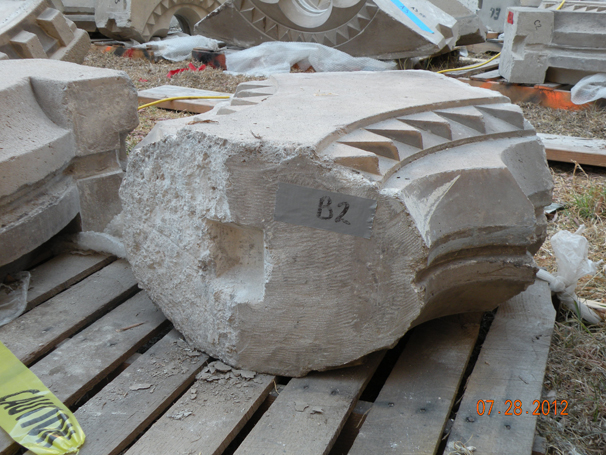
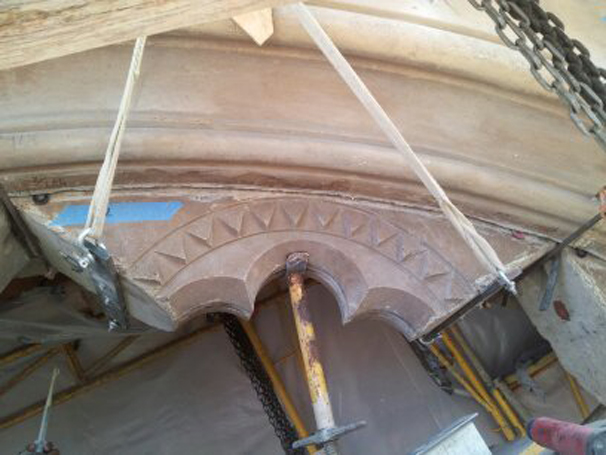
Cut into constituent parts, the surround’s 3 concentric cast stone rings–the first encircling the central roundel, the second dividing the two rings of medallions and the third encompassing the entirety of the window –comprised over 125 cast stone elements diverse in shape and weighing 200+ lbs. apiece. Laid out on the ground in their correct orientation, each was carefully logged, protectively crated, and stored in the order needed for reinstallation.
An exhaustive design and engineering process yielded a complex but comprehensive program for structurally enhancing the surround. The central anchor of the installation would be a stainless steel ring–actually two pre-fabricated semi-circular elements–that would encircle the central roundel; attached structural spokes radiating outward would transect and support the innermost layer of stone elements. From this point, a spiderweb-like radial matrix would be constructed from a succession of 1″ diameter stainless steel rods threaded through each stone as it was erected into position.
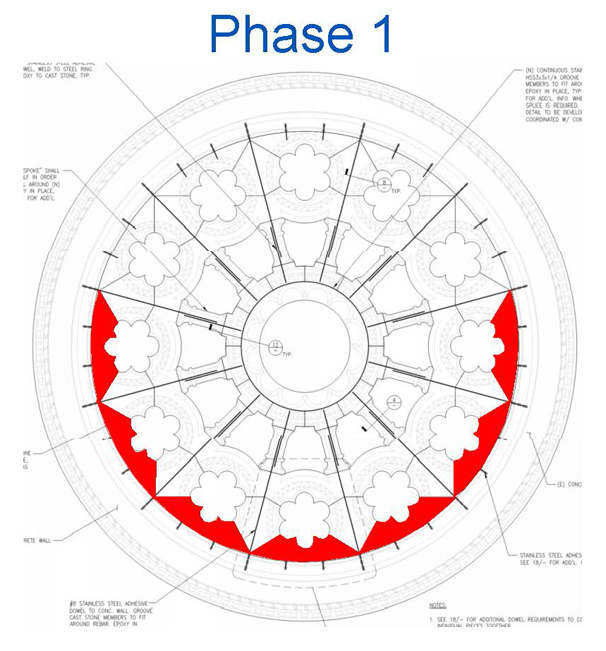
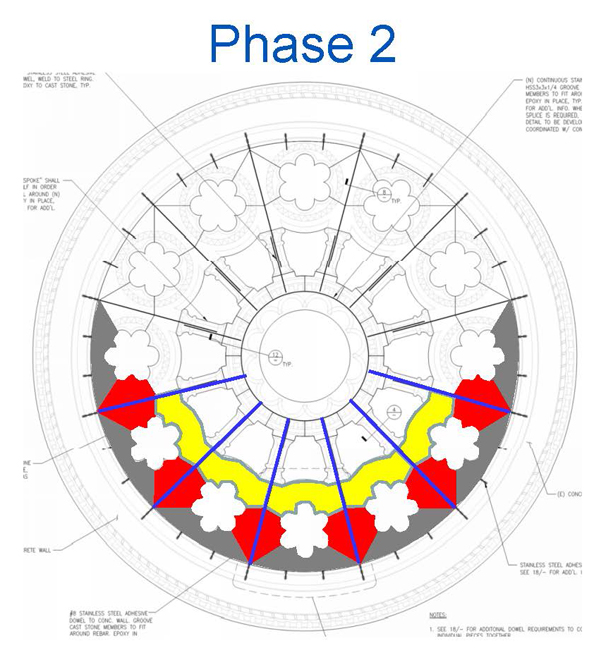
In preparation, the stones were cleaned of old mortar residue and cored for their connecting anchor rods. The central roundel segments were additionally cut in half vertically so that they could be mounted on either side of the central steel reinforcing ring and its radial steel spokes.

The Preservation Arts crew began the actual installation at the outer edge of the lower half of the circle, anchoring the stainless steel rods in position with epoxy-resin adhesive and threading the cored stones over them, building steadily inward toward the center, where they installed the stone and steel central ring assembly. Using the same stainless steel anchor system, they then stacked the components for the window’s upper half in a progressive and linear fashion, tying each back to the center anchor point.

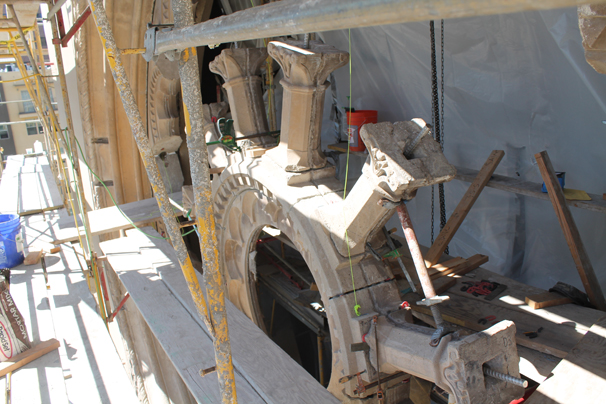
Once Preservation Arts completed reinstallation of the surround, Judson Studios put into place the rejuvenated 25 stained glass panels, revealing the vibrancy and detail of the original design.
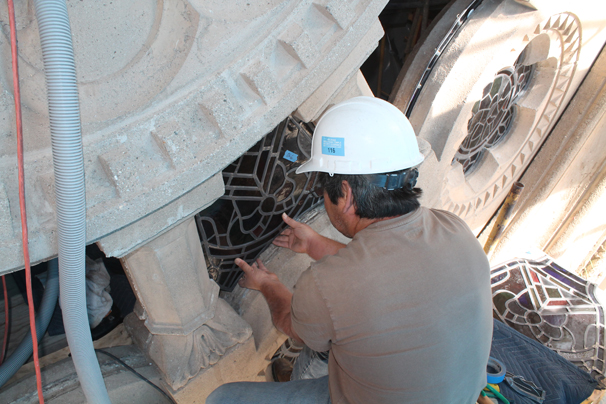
Powerfully dynamic yet reassuringly unchanging, the new old stained glass window, is now a “window of living light,” to quote Horace Judson again, that “will never fade or change, but will always be charged with color and vital life, reflecting the moods of changing light. … Sometimes it will glow with bright and lively color, and at other times be solemn, with deep, rich, mystical color.” Now poised to add beauty and meaning to the religious observances and rites of passage for generations into the future, Wilshire Boulevard Temple’s revitalized rose window is the crowning touch in one of L.A.’s–and the world’s–unique architectural treasures.
